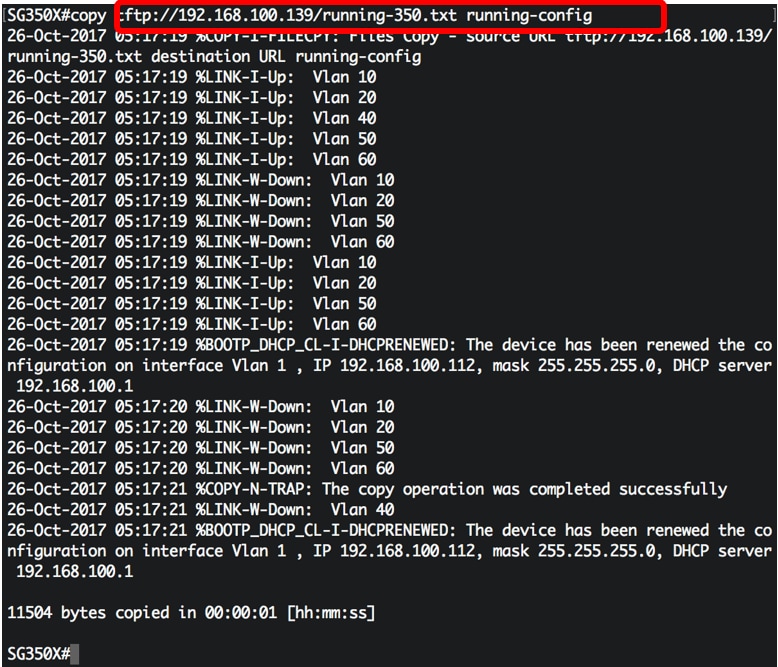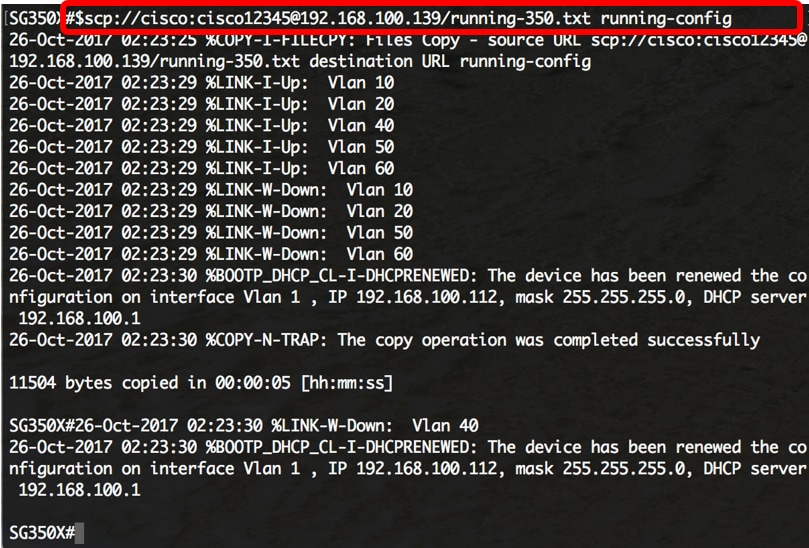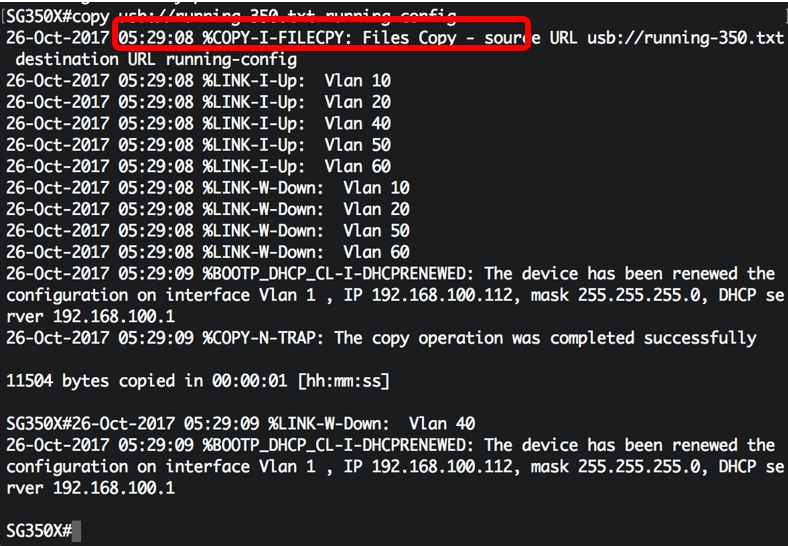How to Upload Config to Switch Console
Objective
The Cisco Small Business Switches contain several configuration and management files which determine the settings of the switch and how it operates. These files can be manipulated on the File Operations page of the web-based utility of the switch, where configuration files can exist backed upwardly, upgraded, or copied. Files tin can be moved betwixt a connected USB device, the internal flash of the switch, or the Piffling File Transfer Protocol (TFTP) or Secure Copy (SCP) server. Storing these files in multiple locations can exist useful in case you want to coil back the device to an earlier country, or in the effect of a device failure. This article provides instructions on how to update the system configuration file through any of the following methods:
- USB or Internal Wink — Choose the source file from the internal flash memory or from a connected USB device on the switch.
- TFTP — Upload the source file to the switch from the TFTP server.
- SCP (File transfer via SSH) — Upload the source file to the switch from the SCP server.
Applicable Devices | Software Version
- Sx350 Series | ii.iii.0.130
- SG350X Series | two.3.0.130
Update Configuration Files
Footstep ane. Log in to the switch console. The default username and password is cisco/cisco. If you have configured a new username or countersign, enter the credentials instead.
To acquire how to access an SMB switch CLI through SSH or Telnet, click here.

The commands may vary depending on the verbal model of your switch. In this example, the SG350X-48MP switch is accessed through Telnet.
Step two. To dorsum upwards a configuration file to a specific destination, enter the following:
CBS350X# copy [src-url] [running-config | startup-config]
The parameters are:
- running-config — The configuration file that contains the current configuration, including any changes applied in any management sessions since the final reboot.
- startup-config — The configuration file that is saved to flash memory.
- src-url — The URL of the source file or the directory to be copied. The predefined URL aliases tin be configured.
- tftp:// — Source URL (tftp://ip-address/filename) for a file on a TFTP network server from which to download.
- scp:// — Source URL (scp://[username:password@]host/filename) for a file on an SCP server from which to download using SSH customer. Earlier y'all continue with the SCP method, make certain that SSH server authentication is enabled, and the corresponding settings have been configured. For instructions on how to configure SSH authentication settings on your switch through the CLI, click here.
- usb:// — Copy from an accented file path on the USB device using the format usb://directory/filename.
- flash:// — Copy from an absolute file path on the wink memory using the format flash://directory/filename.
- exclude — The file does not include sensitive data in the file being copied.
- include-encrypted — The file includes sensitive data in its encrypted form. This secure choice is applied by default, if no secure option is configured.
- include-plaintext — The file includes sensitive information in its plaintext class.
Guidelines:
- Use the copy src-url running-config command to update the electric current configuration file from the file saved at a network server, such equally TFTP or SCP.
- Utilise the copy src-url startup-config control to update the startup configuration file from the file saved at a network server.
TFTP:

In this example, the running configuration file is updated with the configuration file that is located at a TFTP server with IP address 192.168.100.139.
SCP:

In this case, the running configuration is replaced with the configuration file that is saved at an SCP server with IP accost 192.168.100.139, which used the credentials cisco and cisco12345 as the username and password, respectively.
USB or Flash:

In this example, the running configuration is replaced with the configuration file that is saved at a USB device that is continued to the USB port of the switch.
Step 3. (Optional) To copy the running configuration file to the startup configuration file, enter the post-obit:
CBS350X# copy running-config startup-config 
Step 4. (Optional) Printing Y for Yes or N for No on your keyboard once the Overwrite file [startup-config]… prompt appears. In this example, Y is pressed.

Conclusion
You should now have successfully updated the configuration files of your switch through the CLI, using the files that are saved from the network server.
Revision History
| Revision | Publish Date | Comments |
|---|---|---|
| 1.0 | 08-Sep-2021 | Initial Release |
Source: https://www.cisco.com/c/en/us/support/docs/smb/switches/cisco-550x-series-stackable-managed-switches/smb5771-update-configuration-files-on-a-switch-through-the-cli.html